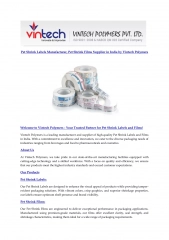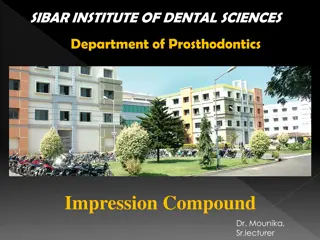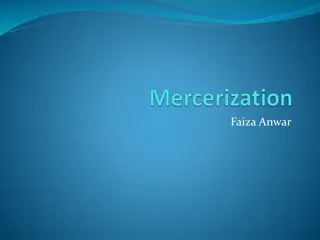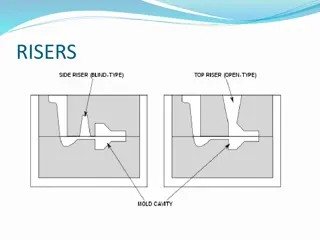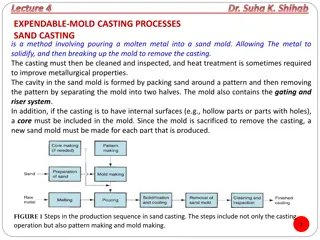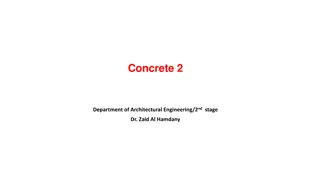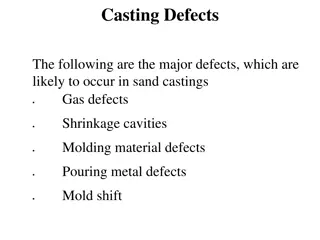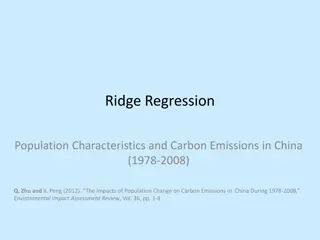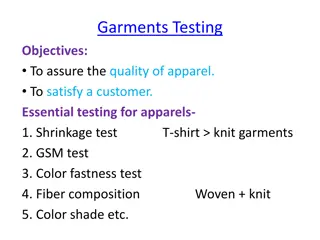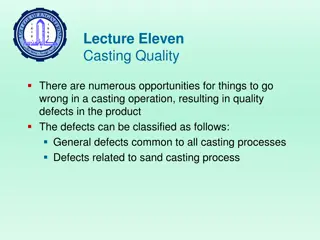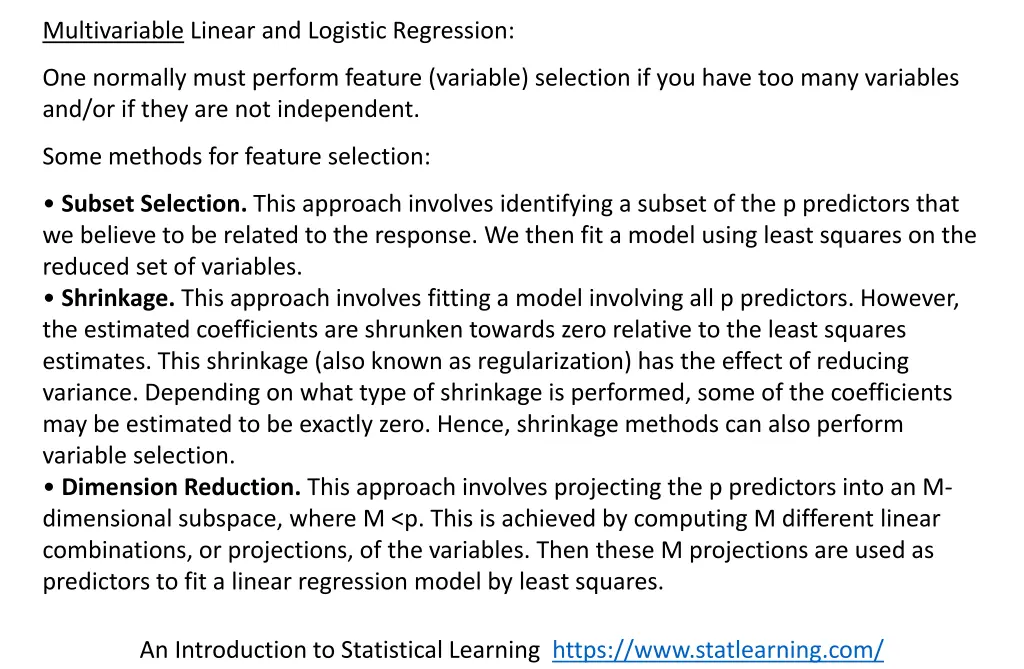
Feature Selection Methods in Multivariable Regression
Learn about different feature selection methods in multivariable regression such as Subset Selection, Shrinkage, and Dimension Reduction to improve model performance and reduce variance. Understand the trade-offs between bias and variance and how overfitting and underfitting impact model accuracy.
Download Presentation

Please find below an Image/Link to download the presentation.
The content on the website is provided AS IS for your information and personal use only. It may not be sold, licensed, or shared on other websites without obtaining consent from the author. If you encounter any issues during the download, it is possible that the publisher has removed the file from their server.
You are allowed to download the files provided on this website for personal or commercial use, subject to the condition that they are used lawfully. All files are the property of their respective owners.
The content on the website is provided AS IS for your information and personal use only. It may not be sold, licensed, or shared on other websites without obtaining consent from the author.
E N D
Presentation Transcript
Multivariable Linear and Logistic Regression: One normally must perform feature (variable) selection if you have too many variables and/or if they are not independent. Some methods for feature selection: Subset Selection. This approach involves identifying a subset of the p predictors that we believe to be related to the response. We then fit a model using least squares on the reduced set of variables. Shrinkage. This approach involves fitting a model involving all p predictors. However, the estimated coefficients are shrunken towards zero relative to the least squares estimates. This shrinkage (also known as regularization) has the effect of reducing variance. Depending on what type of shrinkage is performed, some of the coefficients may be estimated to be exactly zero. Hence, shrinkage methods can also perform variable selection. Dimension Reduction. This approach involves projecting the p predictors into an M- dimensional subspace, where M <p. This is achieved by computing M different linear combinations, or projections, of the variables. Then these M projections are used as predictors to fit a linear regression model by least squares. An Introduction to Statistical Learning https://www.statlearning.com/
? ? = ?0+ ?1?1+ ??2+ + ???? Many variables: low bias, can find a good fit given enough variables. But High Variance: Coin flip will improve fit for training set, but will usually result in a bad fit for the testing data set. Thus there will be high variance in sum of squares for different testing sets. StatQuest: Linear Models Pt.1 - Linear Regression https://www.youtube.com/watch?v=nk2CQITm_eo
Ivan Meza http://turing.iimas.unam.mx/~ivanvladimir/slides/rpyaa/02_regression.html#/60 High bias High variance Underfitting versus overfitting ??: ? ? = ?0+ ?1? + + ???? https://it.wikipedia.org/wiki/Overfitting
Underfitting versus overfitting https://stats.stackexchange.com/questions/71946/overfitting-a-logistic-regression-model
Devopedia. 2022. "Logistic Regression." Version 10, January 19. Accessed 2023-02-11. https://devopedia.org/logistic-regression Linear model General linear model Cost function for linear regression Cost function for logistic regression (maximum likelihood) Minimize cost function to find best function f (eg: if f(x) = mx + b, find m and b that minimizes Minimize cost function to find best probability function. This cost function RSS. corresponds to finding best m and b that minimizes cost for Validating model: R2, F-statistic, p-value, etc p(x) = 1/[1 + exp(-b - mx)]
The coefficients for our model ? ? = ?0+ ?1?1+ ??2+ + ???? are found by optimizing the cost function = ? ?1, ,?? Ridge, lasso, elastic-net apply a penalty to models involving too many (large parameters): New cost function = ? ?1, ,?? + penalty 2) Ridge penalty: ?(??? Shrinkage: the estimated coefficients are shrunken towards zero Lasso penalty: ?(?|?i|) 2) + ?2(?|?i|) Elastic-net penalty: ?1(???
The coefficients for our model ? ? = ?0+ ?1?1+ ??2+ + ???? are found by optimizing the cost function = ? ?1, ,?? Ridge, lasso, elastic-net apply a penalty to models involving too many (large parameters): New cost function = ? ?1, ,?? + penalty 2) Ridge penalty: ?(??? Shrinkage: the estimated coefficients are shrunken towards zero Lasso penalty: ?(?|?i|) 2) + ?2(?|?i|) Elastic-net penalty: ?1(???
2)wont eliminate parameters Ridge penalty: ?(??? better at co-linearity Ex: column 1 = 2 x column 2 Lasso penalty: ?(?|?i|)will arbitrarily choose among co-linear parameters. 2) + ?2(?|?i|) Elastic-net penalty: ?1(??? will either keep all or eliminate all co-linear parameters.
Multivariable Linear and Logistic Regression: One normally must perform feature (variable) selection if you have too many variables and/or if they are not independent. Some methods for feature selection: Subset Selection. This approach involves identifying a subset of the p predictors that we believe to be related to the response. We then fit a model using least squares on the reduced set of variables. Shrinkage. This approach involves fitting a model involving all p predictors. However, the estimated coefficients are shrunken towards zero relative to the least squares estimates. This shrinkage (also known as regularization) has the effect of reducing variance. Depending on what type of shrinkage is performed, some of the coefficients may be estimated to be exactly zero. Hence, shrinkage methods can also perform variable selection. Dimension Reduction. This approach involves projecting the p predictors into an M- dimensional subspace, where M <p. This is achieved by computing M different linear combinations, or projections, of the variables. Then these M projections are used as predictors to fit a linear regression model by least squares. An Introduction to Statistical Learning https://www.statlearning.com/

